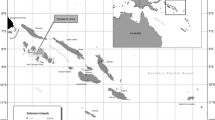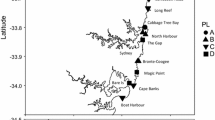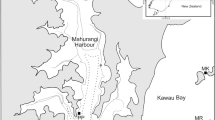Abstract
Rocky intertidal habitats frequently are used by humans for recreational, educational, and subsistence-harvesting purposes, with intertidal populations damaged by visitation activities such as extraction, trampling, and handling. California Marine Managed Areas, particularly regulatory marine reserves (MRs), were established to provide legal protection and enhancement of coastal resources and include prohibitions on harvesting intertidal populations. However, the effectiveness of MRs is unclear as enforcement of no-take laws is weak and no regulations protect intertidal species from other detrimental visitor impacts such as trampling. The goal of this study was two-fold: (1) to determine impacts from human visitation on California mussel populations (Mytilus californianus) and mussel bed community diversity; and (2) to investigate the effectiveness of regulatory MRs in reducing visitor impacts on these populations. Surveys of mussel populations and bed-associated diversity were compared: (1) at sites subjected to either high or low levels of human use, and (2) at sites either unprotected or with regulatory protection banning collecting. At sites subjected to higher levels of human visitation, mussel populations were significantly lower than low-use sites. Comparisons of mussel populations inside and outside of regulatory MRs revealed no consistent pattern suggesting that California no-take regulatory reserves may have limited effectiveness in protecting mussel communities. In areas where many people visit intertidal habitats for purposes other than collecting, many organisms will be affected by trampling, turning of rocks, and handling. In these cases, effective protection of rocky intertidal communities requires an approach that goes beyond the singular focus on collecting to reduce the full suite of impacts.







Similar content being viewed by others
References
Addessi L (1994) Human disturbance and long-term changes on a rocky intertidal community. Ecological Applications 4(4):786–797
Allison GW, Lubchenco J, Carr MH (1998) Marine reserves are necessary but not sufficient for marine conservation. Ecological Applications 8:S79–S92
Agardy T (1997) Marine protected areas and ocean conservation. Academic Press, San Diego, CA, USA
Ambrose RF, Smith JR (2005) Restoring rocky intertidal habitats in Santa Monica Bay. Technical Report for the Santa Monica Bay Restoration Commission
Bally R, Griffiths CL (1989) Effects of human trampling on an exposed rocky shore. International Journal of Environmental Studies 34:115–125
Beauchamp KA, Gowing MM (1982) A quantitative assessment of human trampling effects on a rocky intertidal community. Marine Environmental Research 7:279–293
Branch GM (1974) The ecology of Patella Linnaeus from the Cape Peninsula, South Africa. 2. Reproductive cycles. Transactions from the Royal Society of South Africa 41:111–160
Branch GM (1975) Notes on the ecology of Patella concolor and Cellana capensis, and the effects of human consumption on limpet populations. Zoologica Africana 10:75–85
Brosnan DM, Crumrine LL (1994) Effects of human trampling on marine rocky shore communities. Journal of Experimental Marine Biology and Ecology 177:79–97
Brown PJ, Taylor RB (1999) Effects of trampling by humans on animals inhabiting coralline algal turf in the rocky intertidal. Journal of Experimental Marine Biology and Ecology 235:45–53
Castilla JC (1999) Coastal marine communities: trends and perspectives from human-exclusion experiments. Trends in Ecology and Evolution 14:280–283
Castilla JC, Bustamante RH (1989) Human exclusion from rocky intertidal of Las Cruces, central Chile: effects on Durvillaea antarctica (Phaeophyta, Durvilleales). Marine Ecology Progress Series 50:203–214
Castilla JC, Duran LR (1985) Human exclusion from the rocky intertidal zone of Central Chile – the effects on Concholepas concholepas (Gastropoda). Oikos 45:391–399
Casu D, Ceccherelli G, Castelli A (2006) Immediate effects of experimental human trampling on mid-upper intertidal benthic invertebrates at the Asinara Island MPA (NW Mediterranean). Hydrobiologia 555:271–279
Creese RG (1980) Reproductive cycles and fecundities of four common eastern Australian Archaeogastropod limpets (Mollusca: Gastropoda). Australian Journal of Marine and Freshwater Research 31:49–59
Dayton PK (1971) Competition, disturbance and community organization: the provision and subsequent utilization of space in a rocky intertidal community. Ecological Monographs 41:351–389
Denis TG (2003) Effects of human foot traffic on the standing stock, reproduction, and the size structure of populations of the intertidal rockweed Silvetia compressa (O. Fucales). MS Dissertation, California State University, Fullerton, CA
Duran LR, Castilla JC (1989) Variation and persistence of the middle rocky intertidal community of central Chile, with and without human harvesting. Marine Biology 103(4):555–562
Fairweather PG (1991) A conceptual framework for ecological studies of coastal resources: an example of a Tunicate collected for bait on Australian seashores. Ocean & Shoreline Management 15:125–142
Fraschetti S, Bianchi NC, Terlizzi A, Fanelli G, Morri C, Boero F (2001) Spatial variability and human disturbance in shallow subtidal hard substrate assemblages: A regional approach. Marine Ecology Progress Series 212:1–12
Garrabou J, Sala E, Arcas A, Zabala M (1998) The impact of diving on rocky sublittoral communities: A case study of a bryozoan population. Conservation Biology 12:302–312
Ghazanshahi J, Huchel TD, Devinny JS (1983) Alteration of southern California rocky shore ecosystems by public recreation use. Journal of Environmental Management 16:379–394
Godoy C, Moreno CA (1989) Indirect effects of human exclusion from the rocky intertidal in southern Chile: a case of cross-linkage between herbivores. Oikos 54:101–106
Halpern BS (2003) The impact of marine reserves: Do reserves work and does size matter? Ecological Applications 13:S117–S137
Jackson JBC (2001) What was natural in the coastal oceans? Proceedings of the National Academy of Sciences 98:5411–5418
Jackson JBC, Kirby MX, Berger WH, Bjorndal KA, Botsford LW, Bourque BJ, Bradbury RH, Cooke R, Erlandson J, Estes JA, Hughes TP, Kidwell S, Lange CB, Lenihan HS, Pandolfi JM, Peterson CH, Steneck RS, Tegner MJ, Warner RR (2001) Historical overfishing and the recent collapse of coastal ecosystems. Science 293(5530):629–638
Kanter RG (1977) Structure and diversity in Mytilus californianus (Mollusca: Bivalvia) communities. PhD Dissertation, University of Southern California
Kanter RG (1979) Intertidal study of the Southern California Bight, Volume II; 7.0 Mussel community studies. U.S. Bureau of Land Management, Dept. of the Interior
Kanter RG (1980) Biogeographic patterns in mussel community distribution from the Southern California Bight. In: Power DM (ed) The California Islands: Proceedings of a Multidisciplinary Symposium. Santa Barbara Museum of Natural History, Santa Barbara, CA, pp 341–355
Keough MJ, Quinn GP (1998) Effects of periodic disturbances from trampling on rocky intertidal algal beds. Ecological Applications 8:141–161
Keough MJ, Quinn GP, King A (1993) Correlations between human collection and intertidal Mollusc populations on rocky shores. Conservation Biology 7:378–390
Kido JS, Murray SN (2003) Variation in owl limpet Lottia gigantea population structures, growth rates, and gonadal production on southern California rocky shores. Marine Ecology Progress Series 257:111–124
Lasiak T (1991) The susceptibility and/or resilience of rocky littoral molluscs to stock depletion by the indigenous coastal people of Transkei, Southern Africa. Biological Conservation 56:245–264
Levitan DR (1991) Influence of body size and population density on fertilization success and reproductive output in a free-spawning invertebrate. Biological Bulletin 181:261–268
McLachlan A, Lombard HW (1981) Growth and production in exploited and unexploited populations of a rocky shore gastropod, Turbo sarmaticus. Veliger 23:221–229
Moreno CA, Sutherland JP, Jara HF (1984) Man as a predator in the intertidal zone of southern Chile. Oikos 42:155–160
Moreno CA, Lunecke KM, Lepez MI (1986) The response of an intertidal Concholepas concholepas (Gastropoda) population to protection from man in southern Chile and the effects on benthic sessile assemblages. Oikos 46:359–364
Murray SN (1998) Effectiveness of marine life refuges on southern California shores. In: Magoon OT, Converse H, Baird B, Miller-Henson M (eds) California and the World Ocean ‘97. Taking a look at California’s ocean resources: an agenda for the future. American Society of Civil Engineers, Reston, VA, pp 1453–1465
Murray SN, Denis TG, Kido JS, Smith JR (1999) Human visitation and the frequency and potential effects of collecting on rocky intertidal populations in southern California marine reserves. California Cooperative Oceanic Fisheries Investigation Reports 40:100–106
Oliva D, Castilla JC (1986) The effect of human exclusion on the population structure of keyhole limpets Fissurella crassa and F. limbata on the coast of central Chile. PSZNI Marine Ecology 7:201–217
Ortega S (1987) The effect of human predation on the size distribution of Siphonaria gigas (Mollusca: Pulmonata) on the Pacific Coast of Costa Rica. Veliger 29:251–255
Paine RT, Levin SA (1981) Intertidal landscapes: disturbance and the dynamics of pattern. Ecological Monographs 51:145–178
Pielou EC (1975) Ecological Diversity. Wiley-Interscience Publications, New York, NY
Plathong S, Inglis GJ, Huber ME (2000) Effects of self-guided snorkeling trails on corals in a tropical marine park. Conservation Biology 14:1821–1830
Pombo OA, Escofet A (1996) Effect of exploitation on the limpet Lottia gigantea: A field study in Baja California (Mexico) and California (U.S.A.). Pacific Science 50:393–403
Povey A, Keough MJ (1991) Effects of trampling on plant and animal populations on rocky shores. Oikos 61:355–368
Ricketts EF, Calvin J, Hedgepeth JW (1968) Between Pacific Tides. Stanford University Press, Stanford, CA
Roy K, Collins AG, Becker BJ, Begovic E, Engle JM (2003) Anthropogenic impacts and historical decline in body size of rocky intertidal gastropods in southern California. Ecology Letters 6:205–211
Sagarin RD, Ambrose RF, Becker BJ, Engle JT, Kido J, Lee SF, Miner CM, Murray SN, Raimondi PT, Richards DV, Roe C (2007) Ecological impacts on the limpet Lottia gigantea populations: human pressure over a broad scale on islands and mainland intertidal zones. Marine Biology 150:399–415
Schiel DR, Taylor DI (1999) Effects of trampling on a rocky intertidal algal assemblage in southern New Zealand. Journal of Experimental Marine Biology and Ecology 235:213–235
Smith EH (1993) James V. Fitzgerald Marine Reserve Baseline and Carrying Capacity Study. Harding Lawson Associates technical report prepared for the County of San Mateo, Department of Environmental Services, CA
Smith JR (2005) Factors affecting geographic patterns and long-term change of mussel abundances (Mytilus californianus Conrad) and bed-associated community composition along the California coast. PhD thesis, Department of Ecology and Evolutionary Biology, University of California, Los Angeles, CA
Smith JR, Murray SN (2005) The effects of bait collection and trampling on Mytilus californianus communities in the southern California intertidal zone. Marine Biology 146:699–706
Smith JR, Fong P, Ambrose RF (2006) Dramatic declines in mussel community diversity on the exposed California coast: Response to climate change? Ecology 87:1153–1161
Sousa WP (1979a) Disturbance in marine intertidal boulder fields: The non-equilibrium maintenance of species diversity. Ecology 60:1225–1239
Sousa WP (1979b) Experimental investigations of disturbance and ecological succession in a rocky intertidal algal community. Ecological Monographs 49:227–254
Suchanek TH (1992) Extreme biodiversity in the marine environment mussel bed communities of Mytilus californianus. Northwest Environmental Journal 8:150–152
Suchanek TH (1994) Temperate coastal marine community biodiversity and threats. American Zoologist 34:100–114
Tegner MJ, Basch LV, Dayton PK (1996) Near extinction of an exploited marine invertebrate. Trends in Ecology and Evolution 11:278–280
Tenera Environmental (2003) A comparative intertidal study and user study, Point Pinos, California. Report to the Monterey Bay Sanctuary Foundation, CA
Tetreault I, Ambrose RF (2007) Temperate marine reserves enhance targeted but not untargeted fishes in multiple no-take MPAs. Ecological Applications 17:2251–2267
Ticco PC (1995) The use of marine protected areas to reserve and enhance marine biological diversity. Coastal Management 23:309–314
Zedler JB (1978) Public use effects in the Cabrillo National Monument intertidal zone. Project Report of the U.S. Dept. of Intertior National Park Service
Acknowledgments
This project was partially funded by the Environmental Protection Agency (EPA) and the Minerals Management Service through the Coastal Marine Institute at the University of California, Santa Barbara. We would like to thank the following people for their help in accessing sites and/or permitting sampling in this study: D. Richards, D. Lerma, and the Channel Islands National Park Services for Anacapa Island; P. Raimondi (University of California, Santa Cruz), M. Miner (University of California, Santa Cruz), and the Bixby Ranch for Government Point; M. Wells and Carlsbad State Beach; R. Fairfield, M. Nitzberg, and Natural Bridges State Beach; M. E. Dunaway (Minerals Management Service) for Bolinas and Kibesillah Hill; C. Sandoval and the Coal Oil Point UC Natural Reserve; and F. Sommer and the Hopkins Marine Station. We also thank three anonymous reviewers for constructive comments.
Author information
Authors and Affiliations
Corresponding author
Rights and permissions
About this article
Cite this article
Smith, J.R., Fong, P. & Ambrose, R.F. The Impacts of Human Visitation on Mussel Bed Communities Along the California Coast: Are Regulatory Marine Reserves Effective in Protecting These Communities?. Environmental Management 41, 599–612 (2008). https://doi.org/10.1007/s00267-007-9066-2
Published:
Issue Date:
DOI: https://doi.org/10.1007/s00267-007-9066-2




